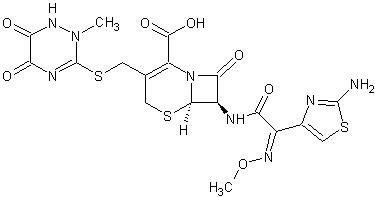|
Related Topics: |
|
Current Research Articles: |
|
Current News |
|
Chemistry A to Z |
|
About Internetchemistry |
|
- Imprint |
|
|
Researchers uncover mechanism of action of antibiotic able to reduce neuronal cell death in brain |
|
RICHMOND, Va. (May 9, 2008) – Virginia Commonwealth University researchers have discovered how an antibiotic works to modulate the activity of a neurotransmitter that regulates brain functions, which eventually could lead to therapies to treat Alzheimer’s disease, Huntington’s disease, epilepsy, stroke, dementia and malignant gliomas. Neurodegenerative diseases are caused by the deterioration of neurons in the brain and spine resulting in problems related to either movement or memory. For most patients, it may be months or years before symptoms are evident because a large number of neurons die or stop functioning over a period of time. Currently, there are few treatment options for stopping this degeneration, and those currently being evaluated have shown minimal or no beneficial activity. |
|
Paul B. Fisher, M.Ph., Ph.D., a professor and interim chair of the Department of Human and Molecular Genetics, and director of the VCU Institute of Molecular Medicine, in the VCU School of Medicine, and colleagues recently reported on the mechanism of action of ceftriaxone, a third-generation antibiotic with neuroprotective properties, in glutamate transport. The findings, published in the May 9 issue of the Journal of Biological Chemistry, suggest that this antibiotic or a similar drug may serve as a potential therapy against neurodegenerative disease caused by glutamate toxicity. Glutamate is an amino acid that is important in nerve transmission and the synapse - the region that connects one neuron to another in the brain. When an excess of glutamate collects in the synapse, the result is glutamate toxicity or excitotoxicity. Ultimately, if glutamate is not cleared out of the synapse, neurons become damaged and die by a process called excitotoxicity. In previous studies, Fisher’s team identified ceftriaxone as a potent physiological stimulator of glutamate transport both in cell culture and in animal models. “Glutamate excitotoxicity is a very important and fundamental process in neurodegeneration,” said Fisher. “Finding molecules, such as ceftriaxone, that may correct this problem can lead to preservation and increased survival of neurons in the brain and it may have direct implications in the therapy of many neurodegenerative diseases, such as in Alzheimer’s disease, stroke, ALS and epilepsy.” In this study, Fisher and his colleagues were interested in identifying how the promoter region of the EAAT2 gene controlled the expression of glutamate in a group of brain cells called astrocytes. Using molecular biological approaches, the team examined all the regions and sequences in the promoter region and systematically eliminated them to then define which region was necessary to respond to ceftriaxone. According to Fisher, this led the team to a critical transcription factor called nuclear factor kappaB, NF- kappaB, which regulates many functions in the brain and other parts of the body. This is a central molecule involved in regulation of genes controlling cell growth and survival. Once they identified critical regions in the EAAT2 promoter that might regulate activity, they found that alteration of one specific NF-kappaB site by mutation in the promoter was responsible for up-regulation of EAAT2 expression and consequently glutamate transport by ceftriaxone. “This work not only has implications for the field of neurodegeneration and neurobiology, but may also help us more clearly understand brain cancer, including malignant glioma, an invariably fatal tumor, and how it impacts brain function,” said Fisher, who is the first incumbent of the Thelma Newmeyer Corman Endowed Chair in Cancer Research and researcher with the VCU Massey Cancer Center. Future studies will examine ways to modify the structure of ceftriaxone through medicinal chemistry to create molecules that are pharmacologically improved. Currently, ceftriaxone needs to be injected, which is not the ideal for patient therapy, however, the development of an oral form would be a more preferential way to treat patients. |
|
|
|
|
Related topics - search form: |
|
|
